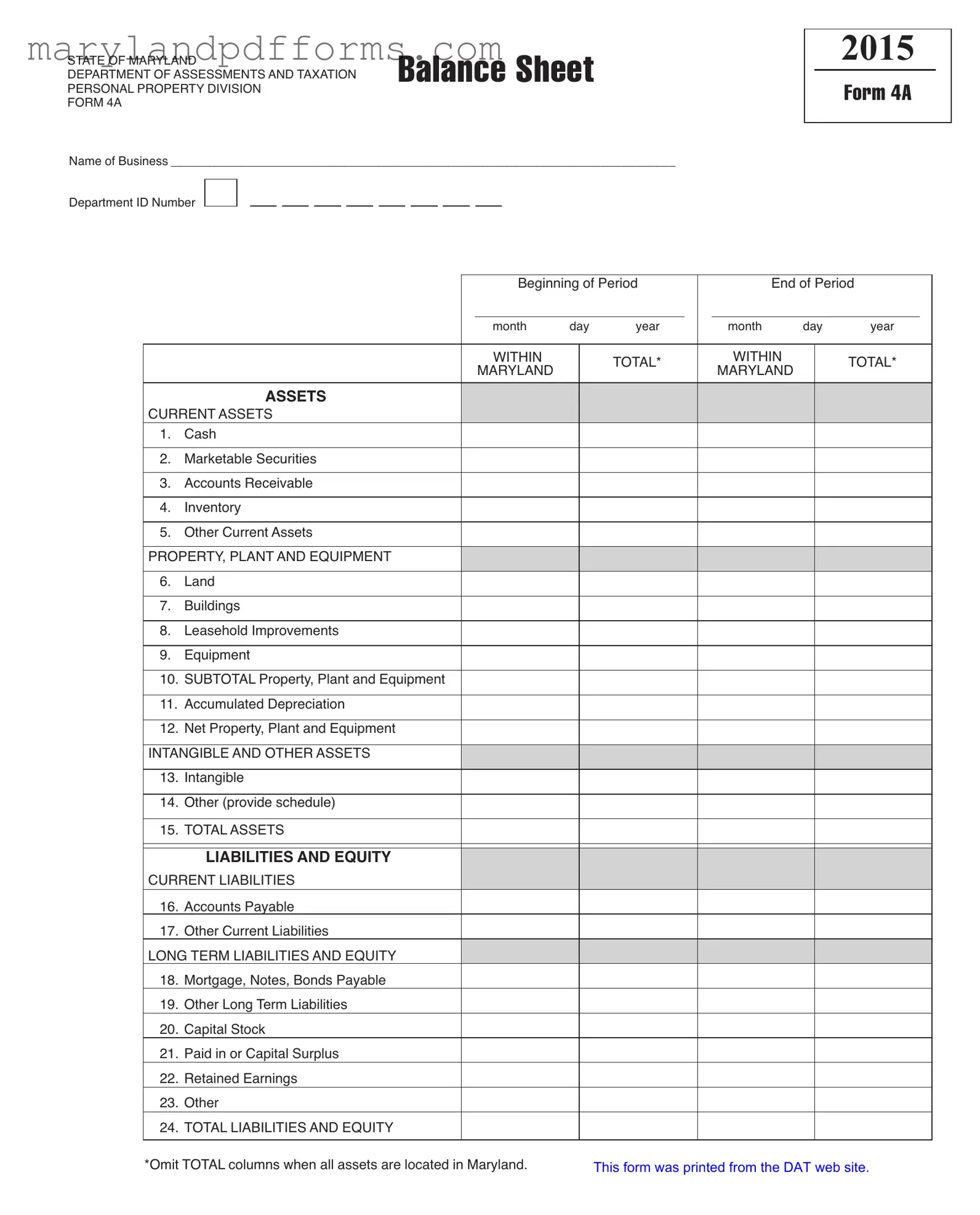The 4A Maryland form is used to report the personal property of a business to the Maryland Department of Assessments and Taxation. It helps the state assess the value of personal property for taxation purposes. By providing a detailed balance sheet, businesses can ensure they are accurately reporting their assets and liabilities, which is crucial for compliance with state tax regulations.
Any business operating in Maryland that owns personal property must file the 4A form. This includes sole proprietorships, partnerships, corporations, and other entities. If a business has personal property valued at $1,000 or more, it is required to complete and submit this form annually. Failing to file can lead to penalties and potential issues with tax assessments.
The 4A form requires a variety of information regarding the business's assets and liabilities. Key sections include:
-
Current Assets:
This includes cash, accounts receivable, inventory, and other current assets.
-
Property, Plant, and Equipment:
Businesses must report values for land, buildings, leasehold improvements, and equipment.
-
Intangible and Other Assets:
This section covers intangible assets and any other assets that require a schedule.
-
Liabilities and Equity:
Businesses need to detail current and long-term liabilities, as well as equity components like capital stock and retained earnings.
Accurate reporting is essential to avoid discrepancies and ensure proper tax calculations.
The 4A form must be filed annually by April 15th. This deadline aligns with the tax filing season for many businesses. It is important to plan ahead and gather all necessary information well in advance to meet this deadline. Extensions may be available, but businesses should check with the Maryland Department of Assessments and Taxation for specific procedures.
Failure to file the 4A form can result in significant consequences. The Maryland Department of Assessments and Taxation may impose penalties, which can include fines or additional taxes. Furthermore, not filing can lead to an estimated assessment of personal property, which may be higher than the actual value. This could result in overpayment of taxes and create complications in future filings. It is always best to comply with filing requirements to avoid these issues.
